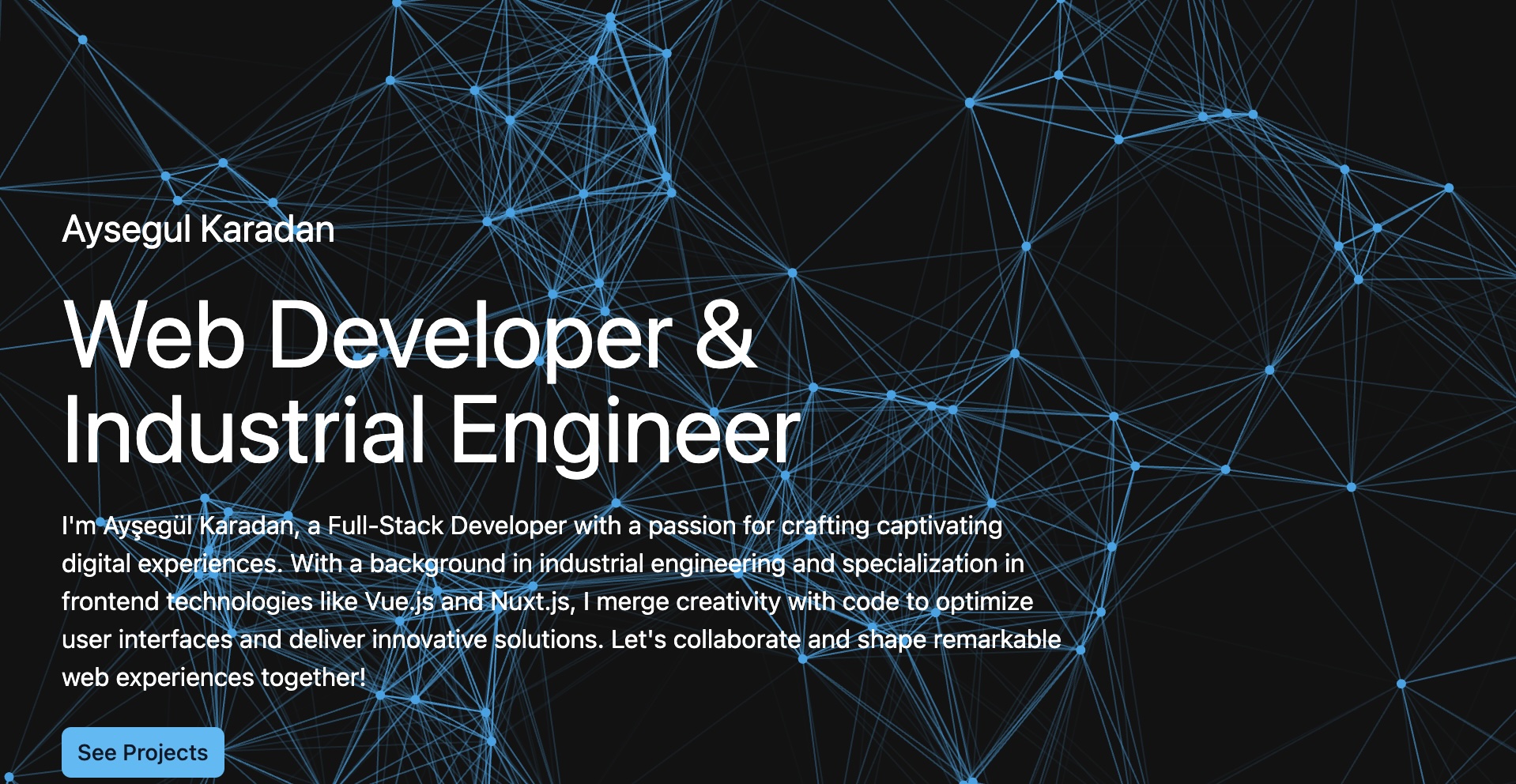Elevate Your Nuxt.js Website with Dynamic Particle Backgrounds: A Step-by-Step Guide

Are you looking to add an eye-catching element to your Nuxt.js website? Look no further! In this post, we'll walk you through the process of integrating dynamic particle backgrounds using tsparticles with Nuxt.js.
Step 1: Installation
The first step is to install the necessary package. Simply use npm or yarn to install nuxt-particles:
npm install --save-dev nuxt-particles
or
yarn add -D nuxt-particles
Step 2: Configuration
After installation, you'll need to configure Nuxt.js to use the particles module. Update your nuxt.config.ts file as follows:
export default defineNuxtConfig({
modules: [
// Other modules...
"nuxt-particles",
],
});
Step 3: Implementation
Now, let's implement the particle background in your Nuxt.js template:
<template>
<NuxtParticles id="tsparticles" :options="options" @load="onLoad"></NuxtParticles>
</template>
<script setup lang="ts">
import type { Container } from "tsparticles-engine";
const options = {
// Particle options...
};
const onLoad = (container: Container) => {
container.pause();
setTimeout(() => container.play(), 2000);
};
</script>
Example Code
You can find an example of this implementation at (https://github.com/karadanay7/mywebsite) This example includes the particle customization options which can guide you to the particles.
<template>
<NuxtParticles id="tsparticles" :options="options" @load="onLoad">
</NuxtParticles>
</template>
<script setup lang="ts">
import type { Container } from "tsparticles-engine";
// See tsParticles documentation for all available options
const options = {
fullScreen: {
enable: true,
zIndex: -1,
},
interactivity: {
events: {
onclick: {
enable: true,
mode: "push",
},
onhover: {
enable: true,
mode: "repulse",
},
},
modes: {
push: {
quantity: 10,
},
repulse: {
distance: 100,
},
},
},
particles: {
color: {
value: "#0ea5e9",
},
links: {
color: "#0ea5e9",
enable: true,
distance: "200",
},
move: {
enable: true,
},
number: {
value: 200,
},
},
};
const onLoad = (container: Container) => {
// Do something with the container
container.pause();
setTimeout(() => container.play(), 2000);
};
const updateParticleNumber = () => {
if (process.client) {
const particleNumber = window.innerWidth < 640 ? 50 : 200; // Adjust the threshold and values as needed
options.particles.number.value = particleNumber;
}
};
// Listen for the window resize event
if (process.client) {
window.addEventListener("resize", updateParticleNumber);
// Initial call to set the particle number based on the initial screen size
updateParticleNumber();
}
</script>
<style scoped></style>
Customization Options
You have full control over the appearance and behavior of the particles. Adjust parameters such as color, movement, interactivity, and more to suit your website's aesthetic. You can checkout documentation here Click here!
Conclusion
By following these simple steps, you can enhance your Nuxt.js website with captivating particle backgrounds, sure to impress your visitors. Experiment with different configurations to achieve the perfect look for your site!
Ready to elevate your web design game? Start integrating tsparticles with Nuxt.js today!
Connect With Me
Have questions about this article or want to discuss web development? Let's connect and share knowledge!
